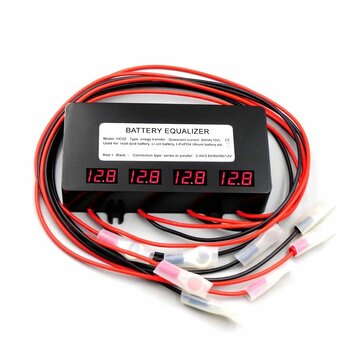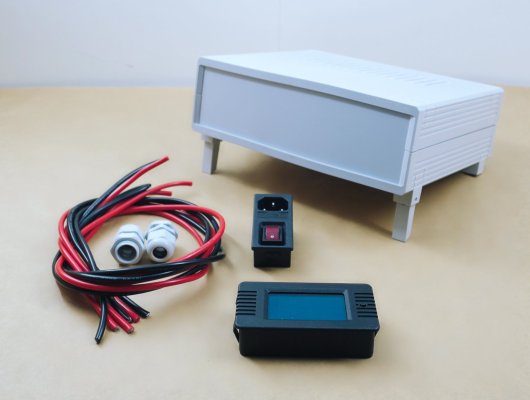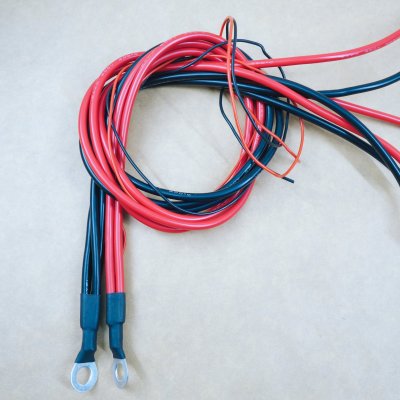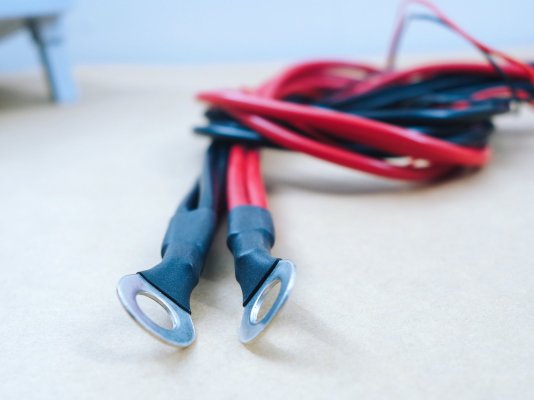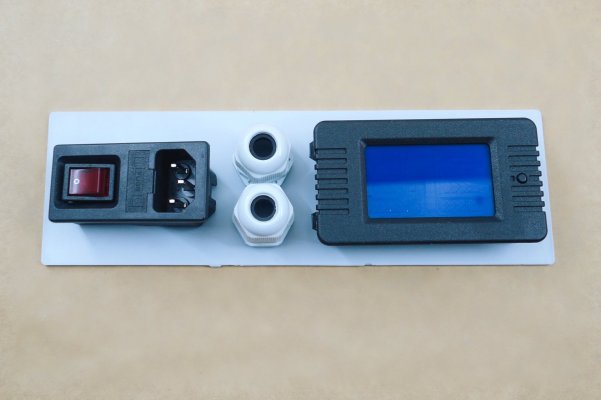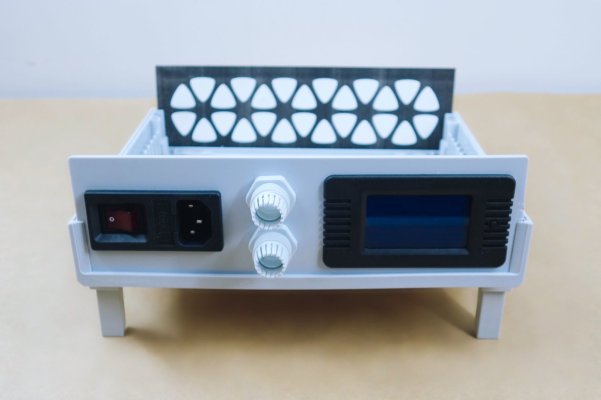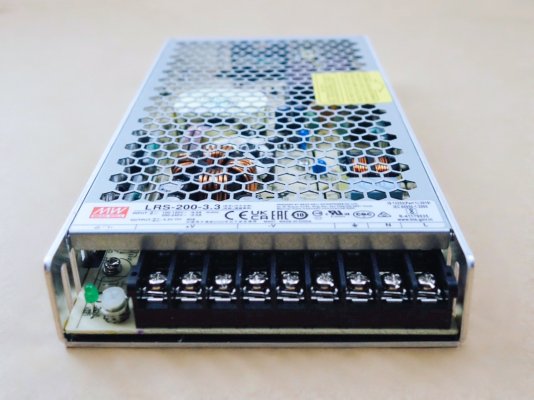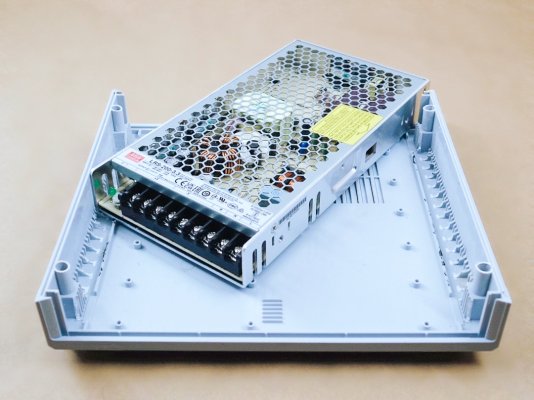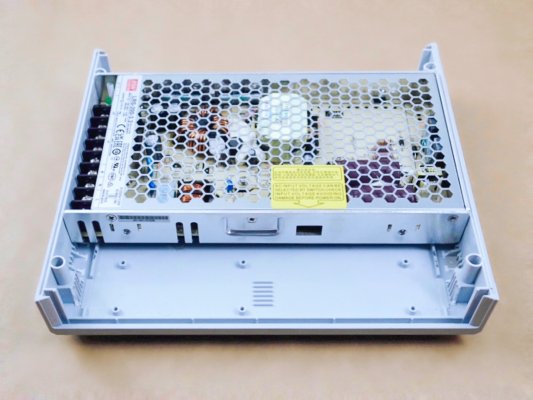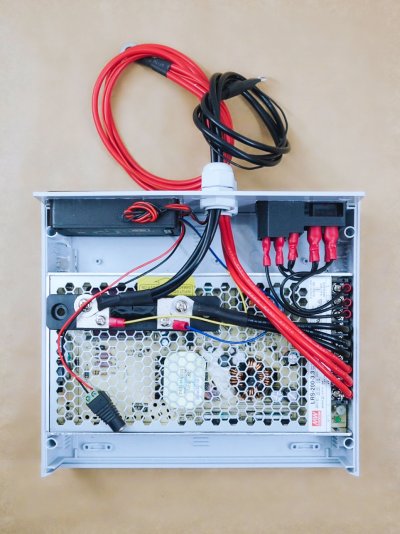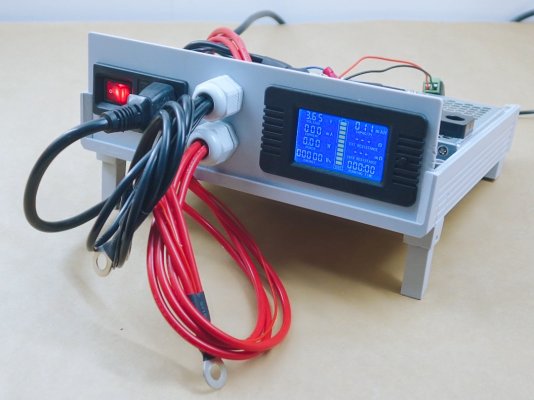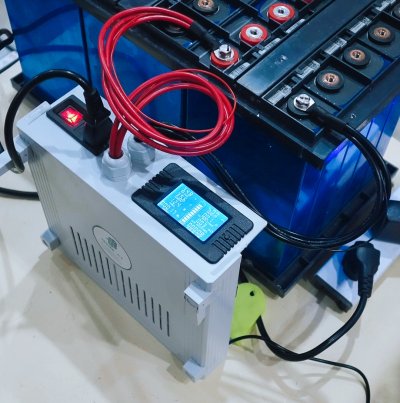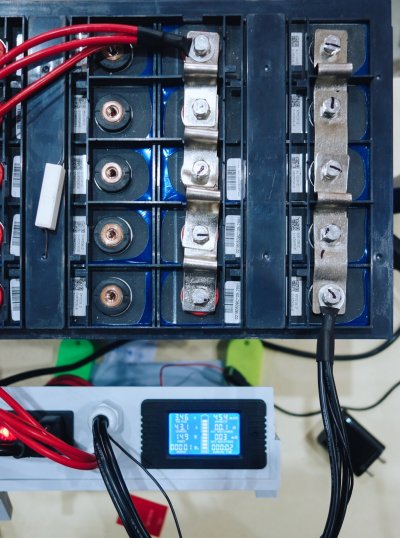rsaeon
Patron
Taking a detour from:
 techenclave.com
techenclave.com
Led me to exploring this option. Most 48V server rack style batteries available abroad are in a 16S configuration and having learned my inverter charges at 14.2V per 12V battery, for a total of 56.8V, divided by 16 resulting in a per cell voltage of 3.55V which is pretty good for a LiFePO4. Bumping it up to 14.6V gives us 3.65V which is pretty much the recommended charging voltage for this chemistry. Float at 13.9V works out to be 3.475V which is a little over the 3.4V recommendation:

 diysolarforum.com
diysolarforum.com
The best option of course would be to build my own battery with a kit from MDS Enterprises who pride themselves as selling only the highest grade, best of the batch LiFePO4 cells:
 techenclave.com
techenclave.com
That wasn't an option for me partly because I don't have that kind of funding and actually well that's the entire reason. MuscleGrid's products are available on Amazon with no-cost emi and seeing how I just got out of a EMI hole it made sense to jump right back in.
Considering how expensive these things are, this one sold by MuscleGrid can't be anything but a very low grade, bottom-of-the-batch rebranded/refurbished/old-stock product. Which is perfectly fine, your first ten thousand batteries are your worst anyway. But seriously, I knew it wasn't going to be the best but that it'll probably be good enough — and way better than any lead acid FLA/AGM option.
So obviously it had to arrive damaged, dented:
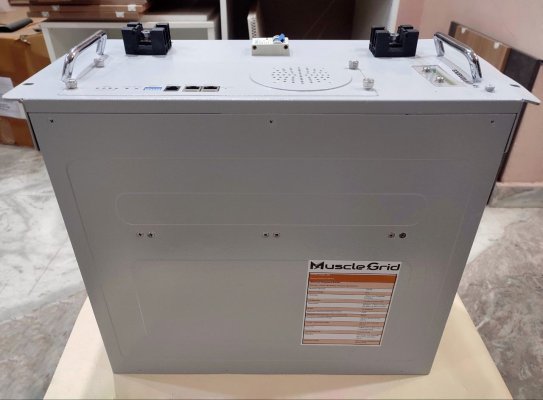
But first, the specifications:
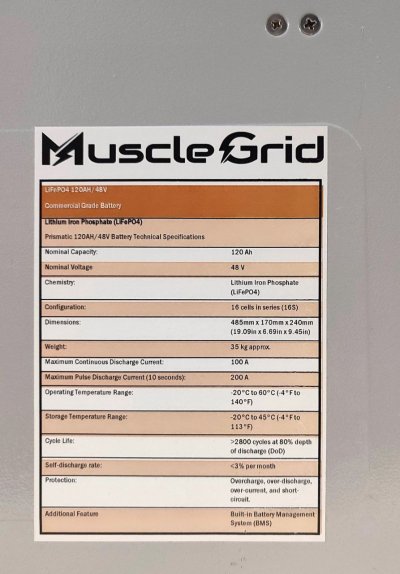
In case it's not clear, this is supposed to be a 16S unit (but it's not, its 15S as photos will later show).
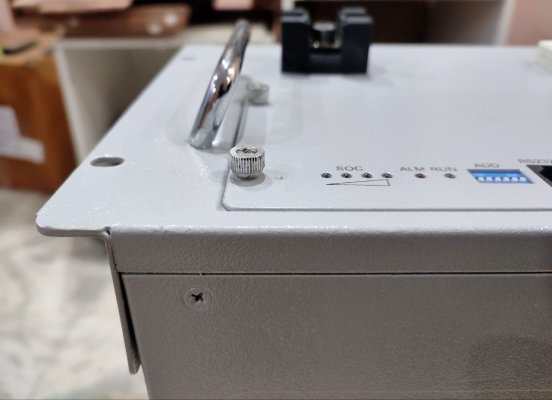
One bent hand grip. Nothing a hammer can't fix.
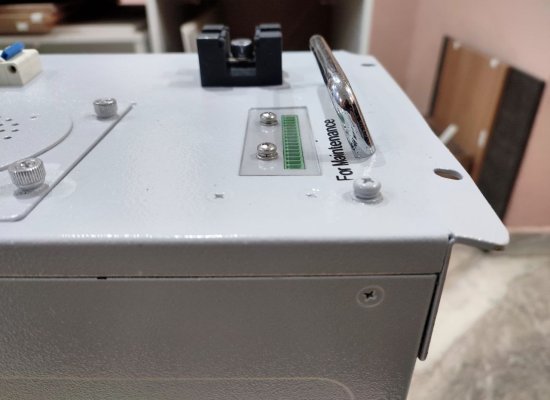
Two bent hand grips. I wasn't planning on keeping this enclosure anyway, I just want the cells.
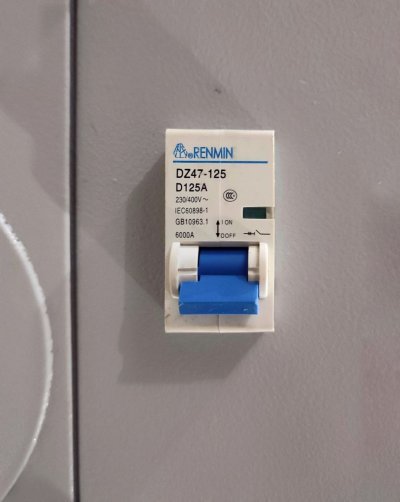
125A DC circuit breaker, that's good to see and reuse in my own pack.
Removing 15 screws reveals the insides:
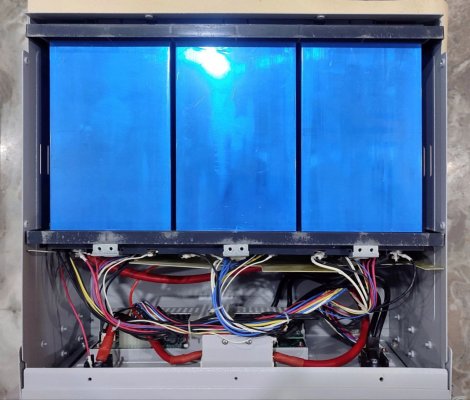
Tidy wiring, which was I guess is the bare minimum standard you can expect.
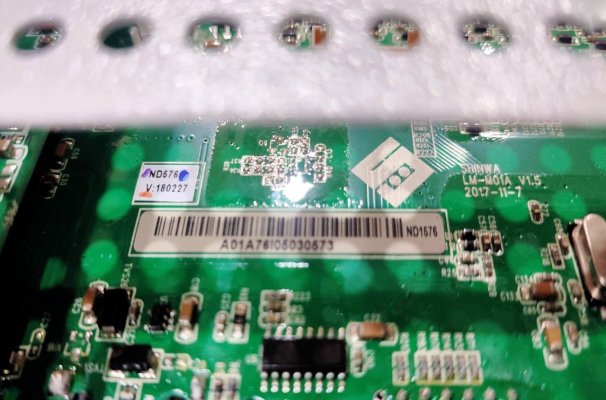
BMS is an older unit from Shinwa:
Unfortunately while it may support a 16S configuration, it was built for a 15S one:
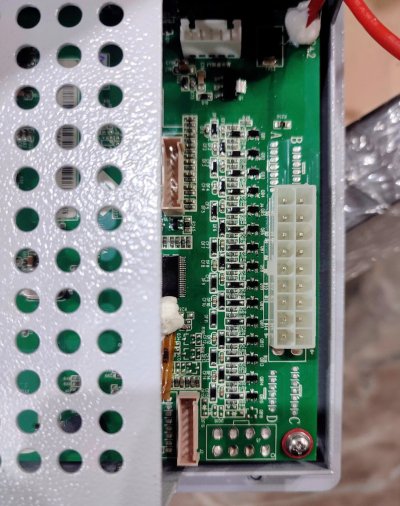
The connector doesn't include the B16 pins. Maybe it could be replaced or rewired or reprogrammed for a 16S configuration, I'll find that out later when I reuse this for a powerwall project.
The battery pack itself:
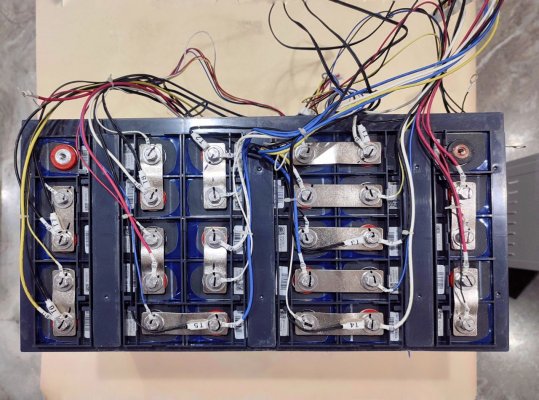
That's a lot of wires! There's EIGHT thermal sensors in there, probably to make sure nothing overheats — either because this 15S configuration was meant for Li-Ion chemistry originally, or they expect 48V inverters to overcharge this 15S pack, at 14.4V that's a per cell voltage of 3.85V which is well out of spec for LiFePO4.
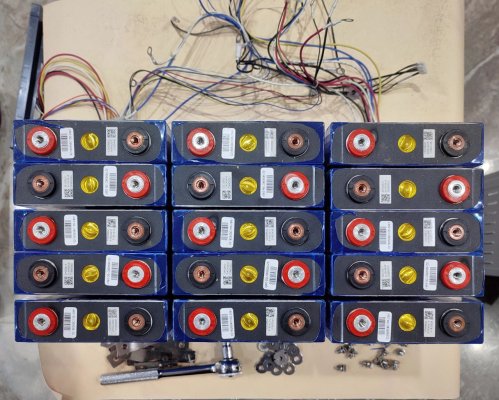
Yeah, that's a 15S pack.
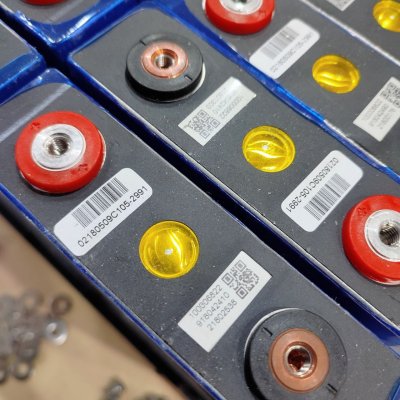
This information is mostly useless, nothing comes up in battery databases or web searches.
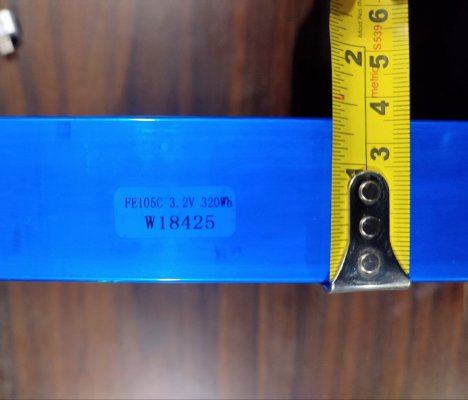
But this sticker reveals it's a Narada Power FE105C cell. The C indicates it's a lower-grade cell, more about that here:
And it also indicates it's a 105Ah battery, not 120Ah as claimed by MuscleGrid.
To recap, these are facts about the MuscleGrid 48V 120Ah LiFePO4 Server Rack Battery:
Todo:
Working with Inverter/UPS Lead Acid Batteries
I'm going to consolidate my experiments and adventures with inverter batteries here. Previous posts on the topic: https://techenclave.com/threads/diy-wi-fi-battery-monitor-for-inverters-ups-iot-lead-acid-battery.217210/...
 techenclave.com
techenclave.com
Led me to exploring this option. Most 48V server rack style batteries available abroad are in a 16S configuration and having learned my inverter charges at 14.2V per 12V battery, for a total of 56.8V, divided by 16 resulting in a per cell voltage of 3.55V which is pretty good for a LiFePO4. Bumping it up to 14.6V gives us 3.65V which is pretty much the recommended charging voltage for this chemistry. Float at 13.9V works out to be 3.475V which is a little over the 3.4V recommendation:

Recommended Charge Profile for DIY LiFePO4 Batteries *Sticky Post*
12V 4S LiFePO4 Battery w/ BMS: Absorption: 14.5V Float: 13.6V Inverter Cut-off: 10.7V-12V (depending on size of load and voltage drop etc) 24V 8S LiFePO4 Battery w/ BMS Absorption: 29V Float: 27.2V Inverter Cut-off: 21.4V-24V 48V 16S LiFePO4 Battery w/ BMS Absorption: 58V Float: 54.4V...
The best option of course would be to build my own battery with a kit from MDS Enterprises who pride themselves as selling only the highest grade, best of the batch LiFePO4 cells:
Where can I buy LifePo4 grade A prismatic cells in India?
I come across a lot of IndiaMart vendors selling LifePo4 cells and I don't know which ones are reliable. I can't find anyone selling known brands like EVE, CATL or CALB. If any of you have purchased them from Alibaba do share your experience.
 techenclave.com
techenclave.com
That wasn't an option for me partly because I don't have that kind of funding and actually well that's the entire reason. MuscleGrid's products are available on Amazon with no-cost emi and seeing how I just got out of a EMI hole it made sense to jump right back in.
Considering how expensive these things are, this one sold by MuscleGrid can't be anything but a very low grade, bottom-of-the-batch rebranded/refurbished/old-stock product. Which is perfectly fine, your first ten thousand batteries are your worst anyway. But seriously, I knew it wasn't going to be the best but that it'll probably be good enough — and way better than any lead acid FLA/AGM option.
So obviously it had to arrive damaged, dented:

But first, the specifications:

In case it's not clear, this is supposed to be a 16S unit (but it's not, its 15S as photos will later show).

One bent hand grip. Nothing a hammer can't fix.

Two bent hand grips. I wasn't planning on keeping this enclosure anyway, I just want the cells.

125A DC circuit breaker, that's good to see and reuse in my own pack.
Removing 15 screws reveals the insides:

Tidy wiring, which was I guess is the bare minimum standard you can expect.

BMS is an older unit from Shinwa:
Unfortunately while it may support a 16S configuration, it was built for a 15S one:

The connector doesn't include the B16 pins. Maybe it could be replaced or rewired or reprogrammed for a 16S configuration, I'll find that out later when I reuse this for a powerwall project.
The battery pack itself:

That's a lot of wires! There's EIGHT thermal sensors in there, probably to make sure nothing overheats — either because this 15S configuration was meant for Li-Ion chemistry originally, or they expect 48V inverters to overcharge this 15S pack, at 14.4V that's a per cell voltage of 3.85V which is well out of spec for LiFePO4.

Yeah, that's a 15S pack.

This information is mostly useless, nothing comes up in battery databases or web searches.

But this sticker reveals it's a Narada Power FE105C cell. The C indicates it's a lower-grade cell, more about that here:
And it also indicates it's a 105Ah battery, not 120Ah as claimed by MuscleGrid.
To recap, these are facts about the MuscleGrid 48V 120Ah LiFePO4 Server Rack Battery:
- It arrived damaged, despite being packed in a wooden crate
- It's 15S not 16S
- It's 105Ah not 120Ah
- It uses 'C' grade/batch cells from Narada Power
- It'll probably last ten years or more despite all of this (benefits of LiFePO4 chemistry)
Todo:
- Purchase a single cell to rebuild this as a 16S pack
- Build or buy a 16S BMS
Last edited:


